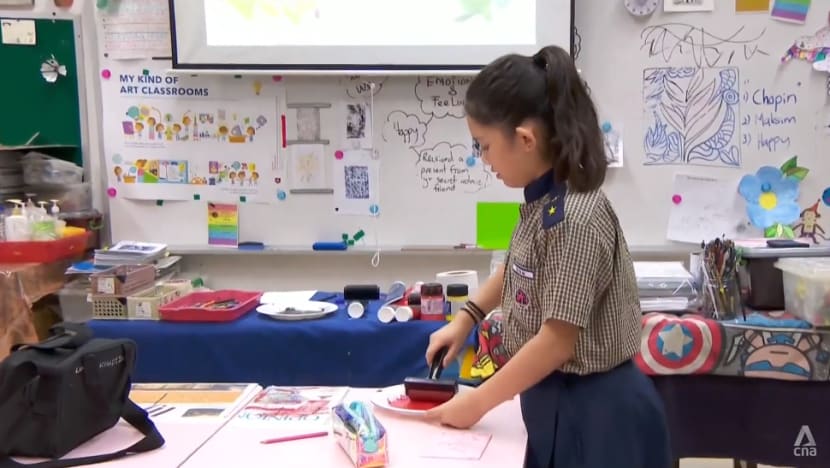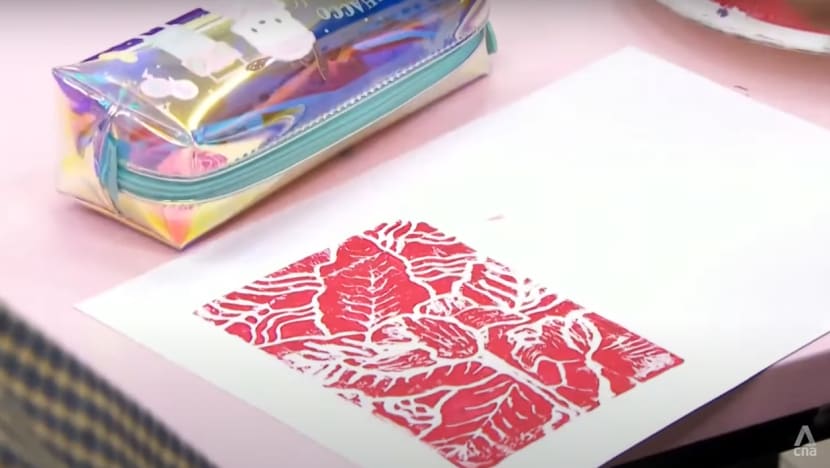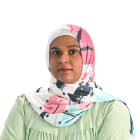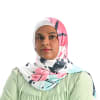Primary school art syllabus refreshed to cover more local, contemporary artworks, newer media
Under the new syllabus, pupils will get to learn new art forms such as augmented reality and mural painting.

Pupils at Anderson Primary School have activities like print-making during art lessons.
SINGAPORE: At Anderson Primary School, pupils learn to paint with more than just brushes.
Print-making lessons are just one of the many ways in which they are taught to express themselves.
"We expose them to many art forms and art works and we bring them to real experiences like the museum to gather more information," said art teacher Maefrize Khoo.
She added that at such a young age, the pupils are very curious and imaginative.
"They don't mind trying new things and when they collect all this information, their brains will develop," she said.
But these budding artists are still hungry for more.
"I would like to do more digital art and learn how to make more realistic (drawings)," said Primary 5 pupil Ng Jun Ying.
NEW ART SYLLABUS NEXT YEAR
She might just get her wish when the primary school art syllabus is refreshed next year.
In a press release on Monday (Jul 17), the Ministry of Education (MOE) said that the syllabus has been refreshed “in tandem with the evolving global and education landscape”.
“It continues to place emphasis on building students' capacity to enjoy art and aims to develop in students the competencies and dispositions of an active artist and an informed audience,” the statement said.
Under the new syllabus, pupils will get to learn new art forms such as augmented reality and mural painting.
Teachers will also get guidance and support as they experiment with how technology can be used to create art.
Students will also be exposed to a wider range of local artists like Sarkasi Said and Tan Zi Xi, who inspired student pieces at the Singapore Youth Festival.
MORE LOCAL, CONTEMPORARY ARTWORKS
MOE has co-curated a new list with the National Arts Council, which includes more local and contemporary artworks, its lead specialist for art Shirley Wee told CNA938 on Monday.
“We really want our students to be able to make the connection and in the process be able to better appreciate the culture and heritage,” she said.
When teachers gave feedback that certain artworks might be quite challenging and too abstract for children, the ministry took it seriously, she told CNA.
Beyond getting students to put their own spin on famous pieces, schools can also invite local artists over to host talks.
"They definitely can't just keep hearing from the teachers alone. It's great for them to hear from artists and hear their artistic processes, why they do what they do, what are some thinking behind the creation of their artwork,” said Peiying Primary School art teacher Athena Wee.
“There's definitely a need for learning beyond the classroom.”

She noted that there has been technological advancement in artistic practices, adding that digital art and digital photography will be added in the new curriculum.
She looks forward to the additional resources art teachers will receive to help them adapt to the changes, she added.
Anderson Primary School’s Ms Khoo said: “I would hope that the new curriculum will give more joy for students who learn art.”
“We really aspire (for) them to grow into people who care and and love the environment and good citizens, because through their art they can learn to trust themselves and try new frontiers for themselves.”


















